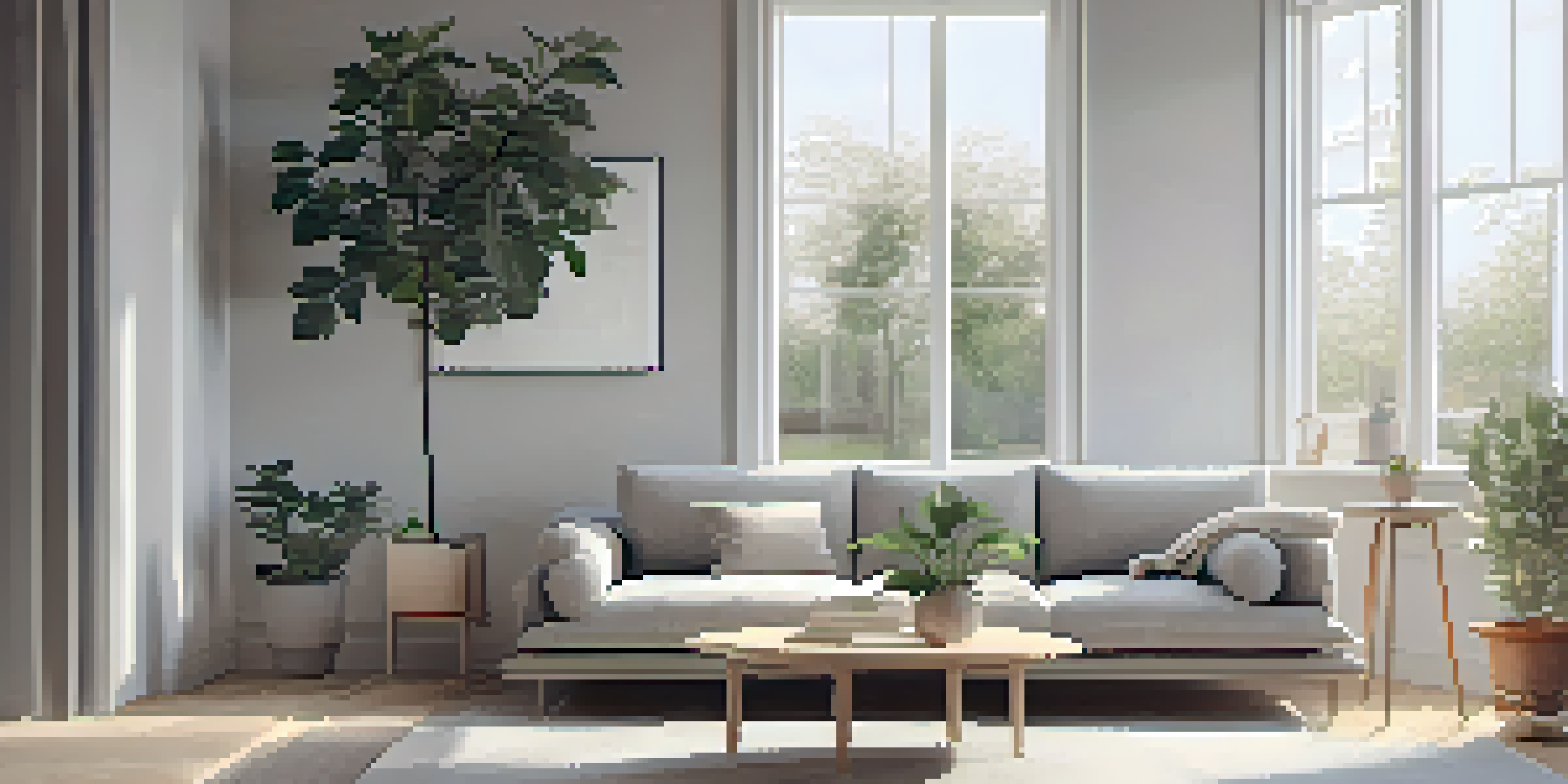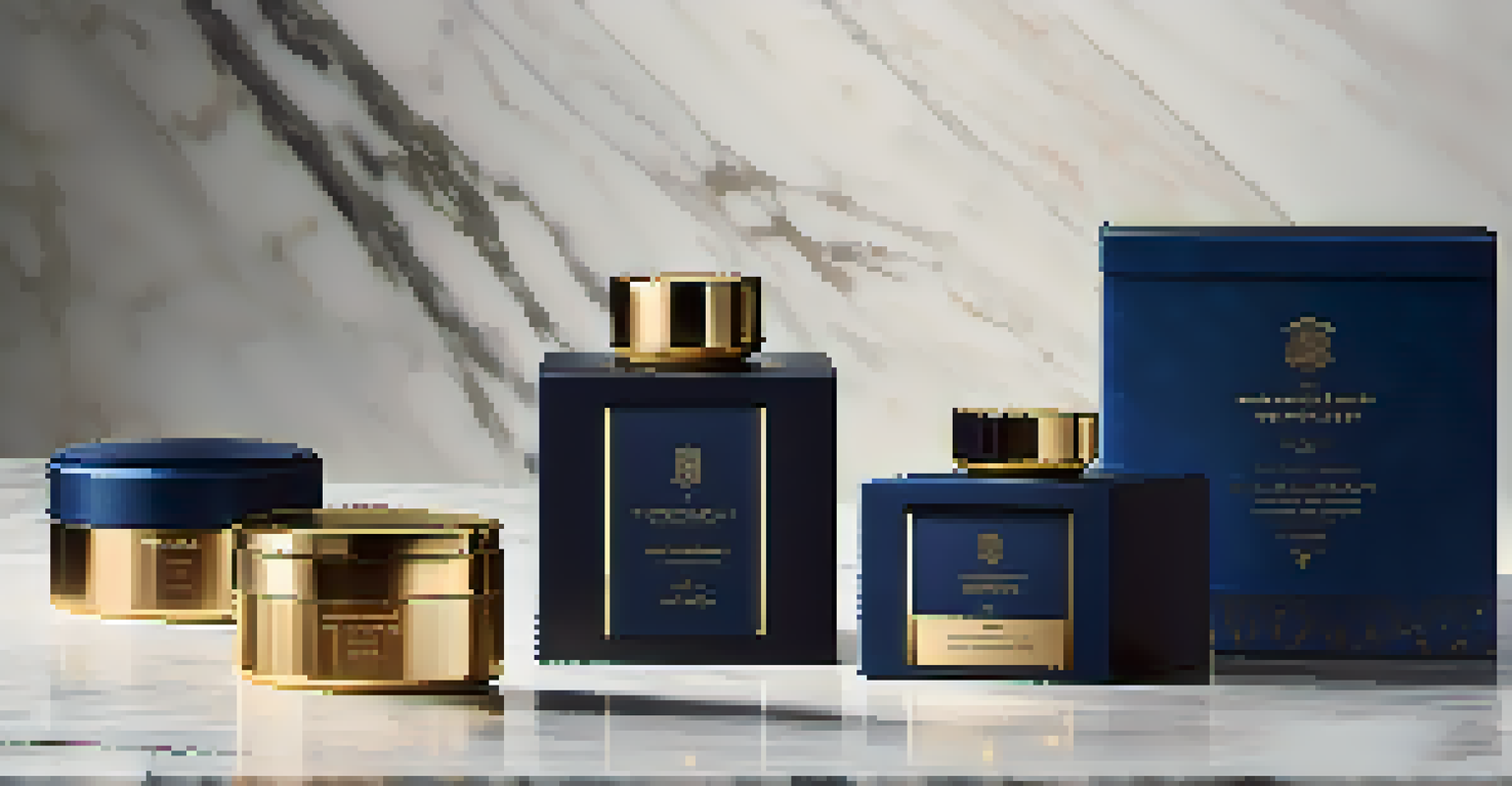The Influence of Design Trends on Buyer Preferences

Understanding Design Trends and Their Importance
Design trends are the prevailing styles that emerge over time, influencing various industries, including fashion, architecture, and product design. They reflect societal values, technological advancements, and cultural shifts, making them vital for businesses to understand. A strong design trend can create a ripple effect, affecting consumer preferences and purchasing decisions.
Design is not just what it looks like and feels like. Design is how it works.
For instance, minimalism, which emphasizes simplicity and functionality, has gained popularity in recent years. This trend resonates with consumers seeking clarity and ease in their lives, leading them to prefer products and brands that embody these values. By recognizing such trends, businesses can align their offerings with what buyers desire, enhancing their appeal.
Ultimately, staying attuned to design trends allows brands to remain relevant and competitive. Ignoring these shifts can result in a disconnect with the target audience, causing potential buyers to overlook what could be the perfect product for them.
The Role of Aesthetics in Consumer Choices
Aesthetics play a crucial role in shaping consumer preferences, as visual appeal often drives initial interest in a product. People are naturally drawn to attractive designs, which can evoke emotions and create a sense of connection. This is why brands invest heavily in creating visually compelling designs that resonate with their target audience.

For example, think about the packaging of luxury goods—often sleek, elegant, and eye-catching. This attention to aesthetics not only enhances the perceived value of the product but also influences buyers' decisions. It’s no surprise that consumers are willing to pay more for products that look good and feel right.
Design Trends Reflect Society's Values
Design trends emerge from societal values, technological advancements, and cultural shifts, making them essential for businesses to understand.
In essence, a well-thought-out design can make all the difference in a crowded market. Brands that prioritize aesthetics are more likely to capture attention and foster brand loyalty among consumers, driving repeat purchases.
How Color Trends Affect Buyer Preferences
Color is a powerful design element that can significantly influence buyer behavior. Different colors evoke various emotions and perceptions; for instance, blue often conveys trust and reliability, while red can create a sense of urgency. Understanding these associations is key for brands aiming to connect with their audience effectively.
Sustainability is no longer about doing less harm. It's about doing more good.
Consider how brands like Coca-Cola strategically use red in their branding. This color creates excitement and encourages consumers to act quickly. Similarly, tech companies often use blue to portray professionalism and dependability, appealing to a more corporate audience.
By leveraging color trends, brands can align their messaging with consumer preferences, enhancing their impact. This strategic use of color not only attracts attention but also reinforces the brand's identity and values in the minds of potential buyers.
The Impact of Sustainability on Design Trends
As consumers become more environmentally conscious, sustainability has emerged as a significant design trend. Brands that prioritize eco-friendly materials and processes are often favored by consumers looking to make responsible choices. This shift reflects a broader societal change toward valuing sustainability in purchasing decisions.
For example, companies like Patagonia have gained loyal followings by promoting their commitment to environmental responsibility. Their designs often incorporate recycled materials, resonating with consumers who appreciate brands that take action against climate change. This alignment with consumer values can enhance brand loyalty and drive sales.
Aesthetics Drive Consumer Choices
Visual appeal significantly influences consumer preferences, making it crucial for brands to invest in attractive designs.
Ultimately, integrating sustainability into design trends not only meets consumer demand but also fosters a positive brand image. Brands that embrace eco-friendly practices can leverage this trend to differentiate themselves in a competitive market, appealing to a growing demographic of environmentally-aware consumers.
The Influence of Technology on Design Trends
Technology continually reshapes design trends, introducing new materials, tools, and techniques that influence consumer preferences. Innovations like 3D printing and augmented reality allow brands to create unique experiences and products that cater to modern buyers. This integration of technology into design can drive excitement and interest among consumers.
For instance, the rise of smart home devices has brought about a wave of sleek, modern designs that appeal to tech-savvy consumers. Brands like Nest have successfully merged functionality with aesthetics, creating products that are not only practical but also visually appealing. Such designs attract consumers who value both innovation and style.
As technology evolves, so does the landscape of design trends. Brands that embrace technological advancements can stay ahead of the curve, appealing to consumers who are always on the lookout for the latest and greatest in design and functionality.
Cultural Influences on Design Trends
Design trends are often deeply rooted in cultural contexts, reflecting the values, norms, and aesthetics of different societies. As cultures evolve and interact, so do design trends, leading to a rich tapestry of influences that shape buyer preferences. Understanding these cultural nuances can help brands tailor their designs to resonate with specific audiences.
For example, the popularity of Japanese minimalism in Western design reflects a growing appreciation for simplicity and functionality, influenced by cultural shifts toward mindfulness and intentional living. Brands that incorporate these elements into their designs can attract consumers seeking products that align with their lifestyles.
Sustainability Shapes Modern Design
As consumers prioritize environmental responsibility, brands that embrace sustainability in their designs can enhance loyalty and appeal.
By recognizing and respecting cultural influences, brands can create designs that not only appeal to aesthetic preferences but also resonate on a deeper level. This cultural sensitivity can foster a sense of connection with consumers, encouraging them to choose brands that reflect their values and beliefs.
The Future of Design Trends and Buyer Preferences
Looking ahead, the relationship between design trends and buyer preferences will continue to evolve. As society faces new challenges and opportunities, design will adapt to reflect these changes, shaping consumer behavior in the process. Brands that can anticipate and respond to these shifts will be better positioned for success.
For instance, we may see a rise in designs that prioritize health and well-being as consumers become more health-conscious. This could manifest in products that promote physical activity or mental wellness, reflecting a growing awareness of the importance of holistic health. Brands that tap into these emerging trends will likely resonate with consumers seeking to improve their quality of life.

Ultimately, the future of design trends will hinge on the ability to connect with consumers on multiple levels—emotionally, culturally, and socially. Brands that stay attuned to these evolving preferences can create designs that not only capture attention but also foster lasting connections with their audience.